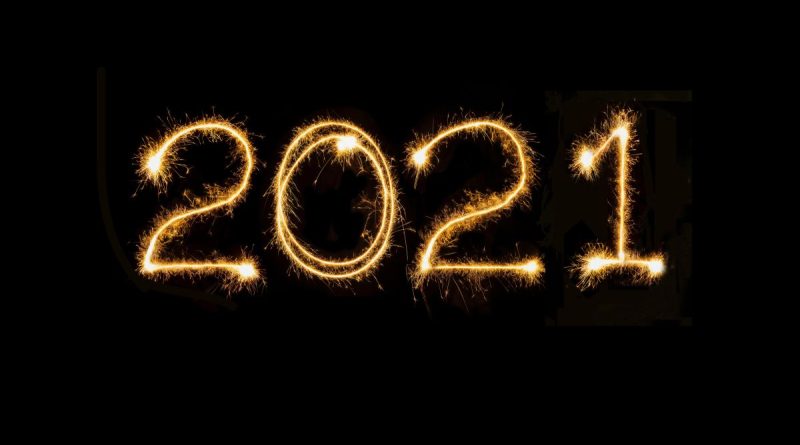Is 1993 equal to 2021? How often do the calendars and 5 other curiosities of the almanacs coincide | The State
It is correct: the same calendar that we had in 1993 coincides with that of this 2021.
The days of the week and dates are identical, as many have noted on the internet with the beginning of this new year. But this fact it is more common than you think.
If you take the 1999 or 2010 calendar, you could also use it to find the days of 2021. And this year’s almanac can also be used in 2027, 2038, 2049 and many other years later.
There is no exact number of years where a calendar can be reused. But the frequency of days it is usually the same: 2,191 (6 years), 4,018 (11 years), 4,382 (12 years), 10,227 (28 years) and 14,609 (40 years)
In the case of leap years, the calendar almost always repeats every 28 years. In contrast, others have a recurrence of 11 or 6 years. Cases less frequent are those of 12 and 40 years.
If we take 2024, for example, the frequency of repetition is 28 years (with some exceptions of 40): it will coincide again in 2052, 2080 and then until 2120.
But in addition to this there are 5 other curiosities.
1. There are 14 settings
The Gregorian calendar, the one used in most of the world, has 14 day and date configurations that are infinitely chained.

For example, this 2021 started on Friday and will end on Friday. It is a configuration.
In 2022 the same will happen, but on Saturdays, which is another configuration; 2023 on Sunday, is a third. But 2024 will be a leap, so it will break the cycle, leading to other year-end and start-up settings on other days.
Total, 14 configurations can be generated. There are no other possible.
2. The 28 year rule
Regular years have 365 days, which mark the cycle in which the Earth goes around the Sun.
But so that this does not fail in its precision, in the Gregorian calendar add one day every four years, resulting in leap years of 366 days.

In them the base multiple is number 28, since it is both a multiple of 4 (the frequency of leap years) and 7 (the days of the week).
Thus, every 28 years their dates and days are repeated. Although there are years when the cycle is broken, as it will be 2100.
This is because only the years that mark the beginning of a centuryand that can be divided by 400 they are leap. Thus, 1900 was not a leap, but 2000 was.
3. Why is it “Gregorian”?
The calendar under which we operate is called “Gregorian” because was established in Europe by Pope Gregory XIII, in the sixteenth century.
After the publication of the papal bull Inter gravissimas, in 1582, replaced the Julian calendar, which had been established by the Roman ruler Julius Caesar in the 1st century

Julian had the problem that it was longer than it should be.
The translation of the Earth around the Sun lasts 365 days, five hours, 48 minutes and 45.25 seconds. But the Julian year was about 11 minutes and 14.784 seconds longer.
If we still followed the Julian almanac, it would not yet be 2021. This January 4 would be December 22, 2020.
4. The time there was a February 30
Not all countries adopted the Gregorian calendar at the same time, which led to an error.
Adopt it required to advance 10 days in 1582 and when Sweden finally he decided to use the Gregorian, he tried it in his own way.

They chose to do it gradually, skipping leap days in February for 40 years, until the offset is eliminated.
According to the Julian calendar they followed, 1700 was a leap year, but they only attributed 28 days to February. They intended to do the same in 1704, 1708, etc. but soon after a war broke out and they forgot about the changes.
A few years later, the emperor Charles XII realized that in Sweden the calendar was neither Julian nor Gregorian, he took drastic measures and abandoned change.
But, since they had already omitted the leap of 1700, he ordered that in 1712 (another leap) an additional day was added behind the February 29, thus creating for the only time in history since the times of Julius Caesar on February 30.
5. Years in other calendars
The Gregorian calendar is the most widespread in the world, but not the only one.
He chinese lunar calendar says we currently live in the year 4718, until February 12, when it will change this year (according to our calendar).
Some Arab nations are governed by the hijri calendar, which changes in the middle of the Gregorian year. So for the next few months we will continue in the year 1442.
The Jews they also have their own calendar, which is one of the oldest in the world. Are in the year 5781, which will change in September.
Now you can receive notifications from BBC News Mundo. Download our app and activate them so you don’t miss our best content.
.


